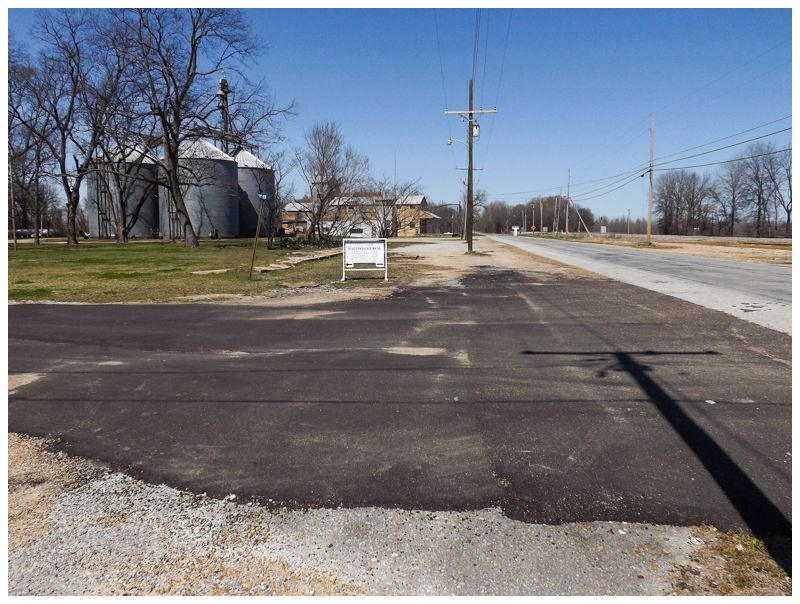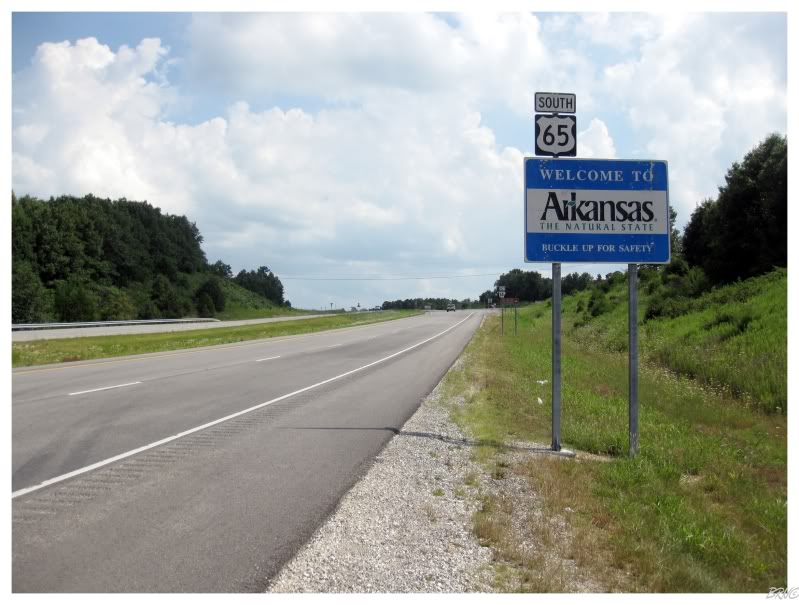Heading south from Memphis, the state of Tennessee quickly ends as you hit the southern border of town. Pretty soon after that, you enter the Mississippi Delta. |

As we drove along a secondary highway, there was one place I specifically wanted to see - the Bryant Grocery and Meat Market ruins in Money, Mississippi. |

In August of 1955, Emmett Till was just 14 years of age when he left Chicago on a summer vacation to visit relatives down south in Mississippi. Bored with the small town of Money, Emmett and his cousin had skipped church one Sunday and went into the Bryant Grocery and Meat Market. Unaware of the societal norms for black and white interactions in the Jim Crow south, Emmett supposedly scared and offended the 21-year-old white shopkeeper Carolyn Bryant by making lewd comments, grabbing at her hand and then her hip, and wolf-whistling at her. Carolyn ran away from the boy, but by the time Carolyn returned to the store with a pistol, Emmett and his cousin had gone on their way. |

Carolyn's husband Roy was not an understanding or level-headed man. Once 24-year-old Roy returned to town a few days later and heard what Emmett did according to his wife Carolyn, Roy set out with his half brother, J.W. Milam, to harass the African Americans of Money and Tallahatchie County until he found this boy. Eventually discovering it was young Emmett Till, Roy & J.W. went to the preacher's house, searched the beds of those sleeping and eventually ordered Till outside. From there they drove to the farm of J.W.'s brother, where they whipped, pistol-whipped and fatally shot Emmett Till. Putting Till's body into the flatbed of their truck, they continued to drive around until they found a cotton mill where they could steal a heavy fan. They then attached this fan to Till's neck with barbed wire so that he would sink to the bottom after being thrown in the Tallahatchie River up in Glendora. |

Three days later, a boy fishing noticed feet sticking out of the water. After a relative identified the body as that of Emmett Till, Roy and J.W. were arrested and charged the next day. The State of Mississippi worked quickly to put Emmett Till in a pinewood box and bury him, but his mother Mamie Till fought tooth and nail to have her son shipped up to Chicago instead. Calling on officials in Illinois and Mississippi, eventually the State of Mississippi relented and Emmett Till came home to Chicago Union Station. This is where the story becomes even more remarkable and you'll understand that I wasn't just visiting a random lynching site in macabre interests. |

Mamie Till insisted on seeing that it was her son and allowing visitors in the thousands to enter to the mortuary and also see him. And in a move that was very unconventional for the time, Mamie Till also insisted on an open casket so that everyone could see her son's mutilated body & the horror which she couldn't describe with her own words. 50,000 people showed up to Emmett's funeral in Chicago, with photographers from Time and Jet Magazine also there. (Time has a great 8 minute video dedicated to the Emmett Till photos.) It's this coverage and the horrific photos of Emmett's unrecognizable face that made whites talk about race relations, while also igniting passion and action for greater treatment of the black man. While the Civil Rights Movement might've started with Brown vs Board of Education, Emmett Till's heinous murder was the mobilizing moment that led to sit-ins, marches and freedom rides. In fact, just 3 months after the funeral, Rosa Parks refused to give up her seat on the bus, later telling Mamie Till that the sight of her son in that casket was one of the things that guided her to sit down for her rights. |

The quickness of the trial also added fire of the Civil Rights Movement. In only 19 days, an all-white, all-male jury acquitted both Roy Bryant and J.W. Milam of all charges - even the kidnapping charge that they used as a defense (they said that they only kidnapped Emmett, but didn't kill him). There's a great New York Times article from Richard Rubin where he tracks down the remaining jurors who were still alive in the 2000s. The one thing that sticks out the most in that article was that there was only one juror who didn't buy the story that the NAACP dumped a dead body in the Tallahatchie to try and disrupt Mississippi's way of life. Although that one juror had the resolve to stick to his guns through 2 votes, he finally relented with a guilty vote on the 3rd try. The deliberation took just over an hour. Video shows Roy Bryant and J.W. Milam celebrating in court, kissing their wives and posing for the cameras. Because of the protection of double jeopardy where they couldn't be tried again, Bryant and Milam sold their murderous confessions to Look Magazine just a year later. Milam admitting that he was the one who actually pulled the trigger. (One good thing here is that Bryant & Milam had stores throughout the area but their clientele of almost all African Americans stopped supporting these two hillbillies after the trial. Their stores, including Bryant's Grocery in Money, went bankrupt and were either closed or sold. Banks also refused them loans to plant crops and the two were forced to run away to Texas.) |

Nearly 50 years later, Carolyn Bryant, in her only interview following Till's death, admitted that she fabricated the egregious parts of her story. Till never grabbed her hand on the counter, or her hip afterwards; and he never made lewd comments. (Till may not have even wolf whistled either, as he suffered from Polio in his youth and his voice had a natural whistle to it.) There's a natural tendency to want to leave out the people who don't deserved to be remembered by history, but Emmett Till's cousin Wheeler Parker made it known how important it was to finally hear Carolyn Bryant admit that she made up the whole story. “It’s important to people understanding how the word of a white person against a black person was law, and a lot of black people lost their lives because of it. It really speaks to history, it shows what black people went through in those days.” |

Across the street from Bryant's Grocery
After Bryant's closed as a meat market, it was briefly owned by the Wolfe family before becoming vacant again. In the 1980s it was purchased by the Tribble family, the patriarch of this family being Ray Tribble who was one of the 12 jurors for the Till trial. Bryant's is a bit strange today because of the immaculately restored Ben Roy's Service Station right next door. This is only because the Tribbles were able to access $200,000 in funds allotted for sites involved in the Civil Rights Movement, although the gas station played little role except being a building that existed that fateful night. Some sources speculate that Mississippi allowed them to renovate the gas station because they thought it would be a good faith gesture towards eventually getting the meat market either renovated, stabilized or turned into a museum. This hasn't happened. Through 7-10 different offers, the sale gets discussed up until a certain point, while the Tribbles keep moving their price higher and higher. By 2019, the asking price was $4 million dollars for a building that probably won't last another 10 years on its own. There have even been free offers to just stabilize the building, but the Tribbles have declined. Another solution involved recent filming of an Emmett Till movie in the area, where some called to leave the constructed, fake Bryant's Grocery erected across the street, and then let the real Bryant's Grocery finally crumble into a pile of weathered bricks. As of this writing, neither of these solutions have come to fruition. Lastly, the Emmett Till Memory Project has some great pictures of the building before the Tribbles let it fall into ruin and before Katrina knocked it even further into ruin. Continue to Part 3... |


